Raspberry chlorosis and its treatment
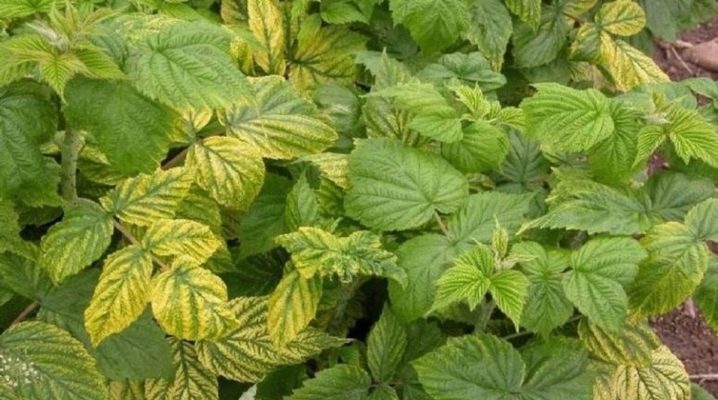
Chlorosis of raspberries is a dangerous disease that can significantly harm the plant if the leaves are not treated in a timely manner. By learning about the causes and types of chlorosis, you can prevent the active spread of the disease, protect raspberries or cure them if symptoms have already appeared.

What it is?
Green shrubs, densely covered with foliage, are involved in the synthesis of chlorophyll on a daily basis. Under the influence of sunlight, plants form a pigment that determines the color of leaves and shoots, which is responsible for supplying cells with a sufficient amount of vital energy.
Chlorosis of raspberries is characterized by a violation of the processes of photosynthesis. Chlorophyll ceases to be produced, leaf plates discolor, only veins remain green.
The danger of this phenomenon for the bush is quite obvious. The developing chlorosis leads to various problems.
- Slowdown of development at all stages.
- Malnutrition at the cellular level.
- Reducing the size of the leaves.
- Chopping fruits.
- The withering away of dead shoots.
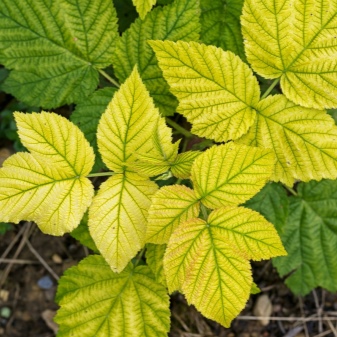

If the causes of chlorosis are not eliminated in a timely manner, the shrub simply dies. Moreover, in some cases, untimely treatment also leads to this. Certain varieties of raspberries do not lend themselves well to such therapy. For them, chlorosis is completely destructive.
It is possible to detect signs of a developing disease visually. The main symptom of raspberry chlorosis is discoloration of the leaf plate. It gradually brightens, while at the initial stage the veins still retain their green color. Then the entire leaf takes on an autumn color, dies off and falls off. The following symptoms can also be indirect signs of the development of chlorosis:
- chopping and drying berries;
- decay of roots;
- reducing the size of the sheet;
- dropping flowers.
In the fall, chlorosis can give the appearance of recovery. During this period, the leaves turn green for a short time. The illness seems to be receding. In most cases, this is just an illusion; in the future, the plant dies if you do not take timely measures to treat it. It is important to know that chlorosis is a common disease of horticultural crops that affects not only shrubs, but also trees. The source of infection can be apple trees, pears growing nearby.

Reasons for the appearance
Chlorosis is a viral infection that infects plants by transfer. The migration of insect pests contributes to its spread. Aphid larvae are the most common source of problems.
Views
Chlorosis falls into 2 main categories. The first of them is of infectious origin. The virus is quite actively transmitted by larvae and adult insects by contact. It penetrates into plant tissues, spreads, increasing the affected area.
The second type of chlorosis is non-infectious or physiological. In this case, a violation of the synthesis of chlorophyll in the leaves can be caused by several reasons.
- High alkali content as part of the soil.
- Waterlogged roots... It can be observed constantly or caused by temporary stagnation of water, an intense increase in its level.
- Lack of minerals. Typically, this is manifested by a deficiency of sulfur, magnesium or iron.
- Exposure to adverse weather or climatic conditions. Prolonged rains and low atmospheric temperatures can disrupt the processes of photosynthesis.
- Improper watering... Short-term chlorosis can occur after contact of the root system with too cold water.With the normalization of watering processes, the green tint of the foliage is restored within a week.
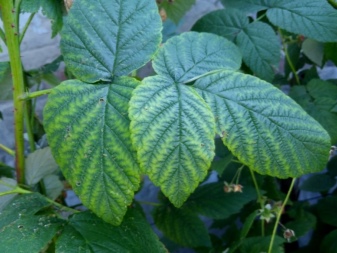
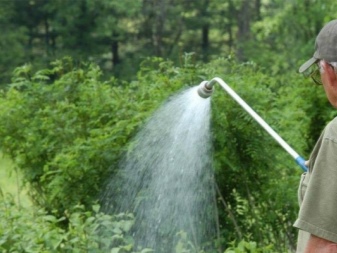
It is possible to determine the true nature of chlorosis exclusively by laboratory research.... But gardeners themselves, without conducting an accurate analysis, can figure out this issue. It is worth paying attention to the presence of conditions accompanying the development of the disease. For example, infectious chlorosis manifests itself from the very beginning of the growing season, the leaves change color throughout the bush. There are no additional symptoms.
With chlorosis of a non-infectious nature, it is necessary to pay attention to the accompanying symptoms. With an insufficient content of minerals in the soil, plants can change the color of the leaf plate at any stage of the growing season - from the appearance of the first green shoots to the moment of flowering or fruiting. At the same time, the deficiency of each substance manifests itself in its own way.
- Lack of iron gives chlorosis first on the upper leaves, yellowing spreads evenly throughout the plate without affecting the veins. Often such symptoms are observed in bushes growing on lime-rich soils.
- With magnesium deficiency, photosynthesis is impaired first on the lower leaves. Chlorosis spreads from the edge to the center, sometimes showing a red or orange tint. Externally, color changes may resemble a mosaic. Most often, the problem manifests itself in bushes grown in sand.
- Sulfur chlorosis is atypical... In this type of disease, the veins turn yellow first, and then the color change spreads to the entire leaf plate.
- Potassium deficiency, manifested by a violation of chlorophyll synthesis, looks different... It is manifested by a blanching of the edge of the sheet with the preservation of the green part in the center.
- Nitrogen chlorosis is not very common. The defeat in this case begins with the leaves at the bottom of the bush. In this case, only the streaks are discolored.
- With an excess of alkali, yellow areas appear as streaks.... They run parallel to the veins.
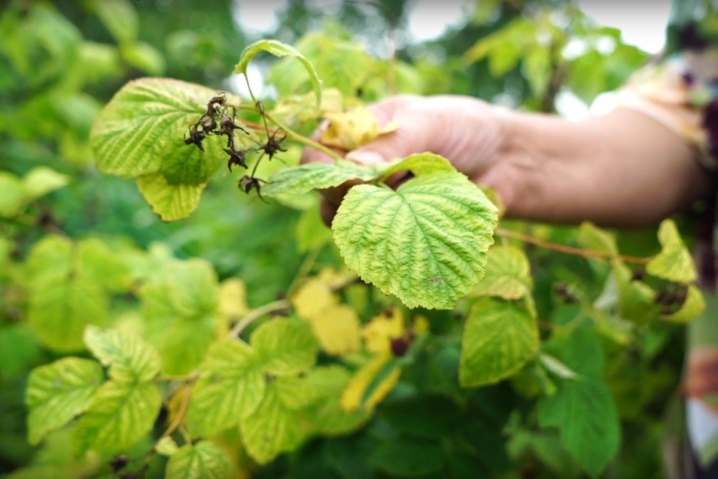
Having established the cause of the development of chlorosis, you can begin to eliminate the problem. The choice of control method will depend on what exactly caused the violation of chlorophyll synthesis.
How to treat?
Before starting treatment, it is worth excluding the most obvious cause of chlorosis. To do this, you need to check the composition of the soil. An excess of alkali prevents the absorption of minerals by the root system. A small amount of soil is separated, then watered with concentrated vinegar. When foam appears on the test sample, it can be concluded that the soil is alkaline.
In this case, treatment always begins with acidification of the soil in the area where raspberries grow. It is necessary to make a special solution for watering. 1 g of citric acid is added to 10 liters of water. The soil is moistened with it in the regular irrigation mode weekly or once every 14 days.... Acidification is continued, periodically repeating the test. This must be done until the reaction to contact with vinegar ceases to appear.
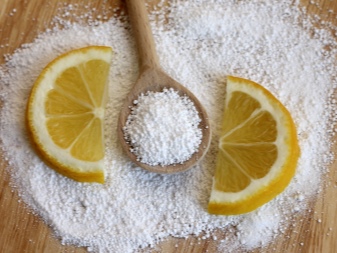

If the normalization of the acid-base balance does not give a visible result, it is worthwhile to carry out symptomatic treatment of non-infectious chlorosis, making up for the lack of nutrients. The procedure in this case will be the same, only the type of nutrient used will change.
- Performing foliar feeding. Spraying leaves and shoots with a solution of the required mineral substance.
- Foliage monitoring... It is necessary to carefully monitor the condition of the plant after feeding. If after 3-4 days the shade of the foliage returns to normal, the treatment is correct.
- Carrying out root feeding. The same minerals are added to the soil that were used for spraying.
- Repeated control after 30 days... When repeated signs of chlorosis appear, top dressing is again performed at the root. Until the symptoms disappear completely, spraying can be performed at intervals of 7-10 days.
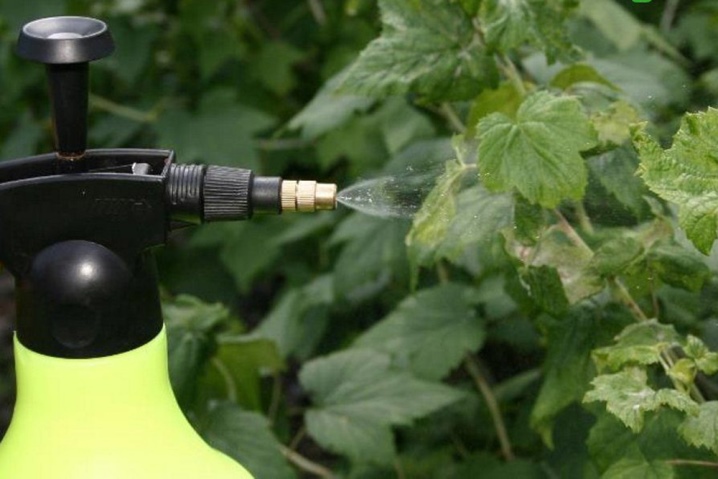
Measures against viral chlorosis are being taken more decisively. If the infectious cause of the disease is accurately established, removing and burning diseased bushes will help prevent its spread. With a weak defeat of the raspberry, you can do without this by cutting off only the affected foliage. Then processing takes place according to the standard scheme, taking into account the stage of its development.
- Until the kidneys swell. At this stage, the most effective solution is foliar spraying of the bush with a 3% solution of Bordeaux liquid.
- In the fall, fertile bushes can be treated with the "Fundazol" at a concentration of 0.1% or "Topaz".
Folk remedies are also used, but rather for preventive purposes. For example, you can try to eliminate the lack of minerals with wood ash. It contains a whole range of useful minerals, you just need to dig in the fertilizer in the root area.
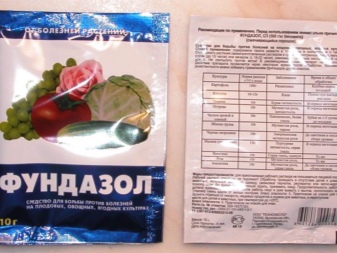

Prevention measures
It is impossible to completely protect plants from chlorosis. But there are simple preventive measures with which it is possible to reduce the risks of developing its non-infectious forms. For example, before planting raspberries in the ground, you can bury nails or other ferrous objects in the ground. When oxidized, iron will gradually enter the soil, supplying the plant with this element.
And also preventive measures can be associated with the correct agricultural technology of the plant. Bushes in raspberries need to be located at a considerable distance from each other, to maintain a sufficient moisture balance in the root zone. Weed control is also an important preventive measure, as they can be a source of viral chlorosis.
Timely destruction of pests is also of great importance.
Thrips and aphids are especially dangerous. When they appear, insecticidal treatment is required. It is these insects that most often contribute to the spread of infectious chlorosis.
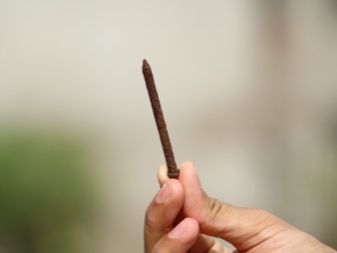
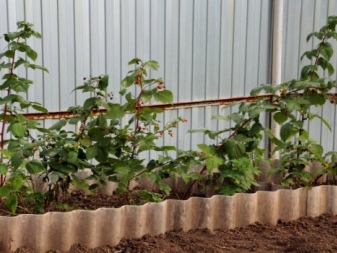













The comment was sent successfully.